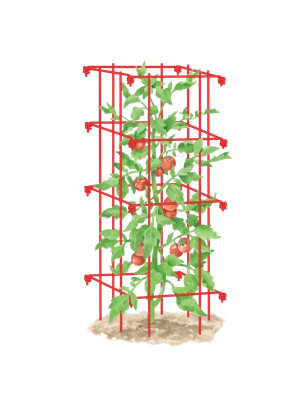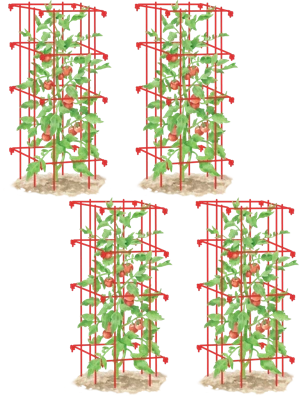Tomato Hornworm
 Tomato hornworm Photo: Ann Whitman
Tomato hornworm Photo: Ann WhitmanThese voracious feeders devour the leaves and fruits of all tomato-family plants including peppers, eggplants and potatoes.
The fat, bright green caterpillars that can be alarmingly large, often measuring more than 3″ long and 1/2″ in diameter. The adult form of this pest is the rather spectacular sphinx moth, which is grayish-brown with orange spots on the body and a 4?5″ wingspan.
The moths appear in late spring to early summer and lay their greenish-yellow eggs on the undersides of leaves. The caterpillars feed for about a month and then crawl into the soil where they overwinter in brown, spindle-shaped pupal cases. There is one generation per year in the North; two or more in the South, and they are found throughout North America.
Prevention and Control
- Handpick hornworms and drop them into a jar of soapy water. However, if the caterpillars have white saclike projections sticking out of their bodies, leave them in place on the plants. These are the pupae of parasitic wasps; encouraging them help keep hornworm populations in balance.
- Till the soil after harvest. This can kill up to 90 percent of the larvae and pupae in the soil.
Last updated: 03/15/2024
Print this Article:
Related items
Get the Dirt
Stay up to date on new articles and advice. Please fill out the information below.









